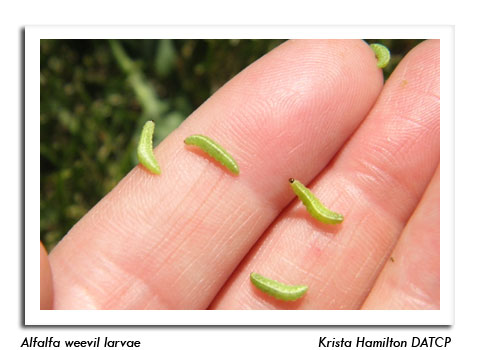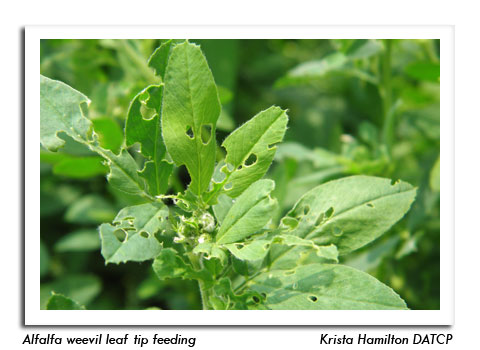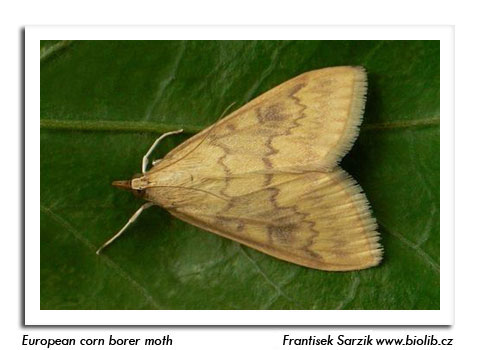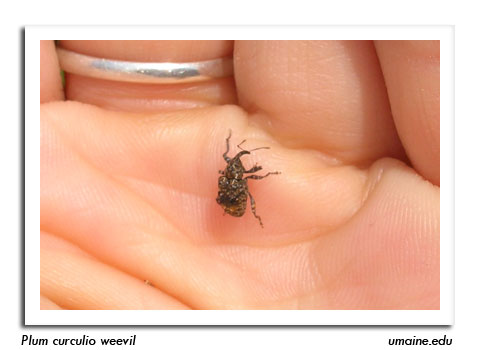
 |
|
|
Looking Ahead
Volume 58 Number 4 Date 05/23/2013 ALFALFA WEEVIL - Larval populations and leaf tip damage have exceeded economic levels in a few southwestern alfalfa fields, although surveys show considerable variation in weevil pressure. Most fields north of Dane County still have very low counts of less than 20 larvae per 100 sweeps and defoliation is well below the 40% threshold. Regular sampling is especially critical at this time. EUROPEAN CORN BORER - The spring flight began on May 20 with the capture of 17 moths at the Prairie du Chien monitoring location. Black light traps elsewhere should register the first moths of the season in the next 1-2 weeks, although the majority of first brood moths are unlikely to emerge before mid-June. POTATO LEAFHOPPER - Migrants were collected in low numbers from 15 of 35 fields sampled in the past week, as far north as Taylor in Jackson County. Recent surveys in alfalfa confirm the first distinct arrival episode has occurred. BLACK CUTWORM - The primary damage period is expected to begin in southern Wisconsin by May 28, or 300 degree days after the first significant capture of moths on May 7. Near Janesville in Rock County, 213 degree days (base 50°F) have accumulated since the first major flight was documented. Larvae are less advanced in central and northern Wisconsin where the start of cutting period is predicted for June 3. Routine scouting is recommended from emergence through the four-leaf stage (V4). PLUM CURCULIO - Beetle activity has increased with the warmer weather. Growers should begin checking early-blooming cultivars and orchard perimeter trees for oviposition scars and feeding injury caused by this pest. Signs of infestation usually become evident in the 14 days after petal fall. CODLING MOTH - The first sustained capture of moths, referred to as the biofix, was set from May 19-21 at apple orchards in Grant, Green and Racine counties. The codling moth flight begins in Wisconsin from 201-340 degree days (base 50°F). According to the 50°F column in the May 22 degree day table, the upper range of this threshold has been surpassed in south-central and southwestern Wisconsin. Daily monitoring is recommended in the next two weeks for central and northern orchards where the biofix has not yet been established. -- Krista Hamilton, DATCP Entomologist 





|
|
|